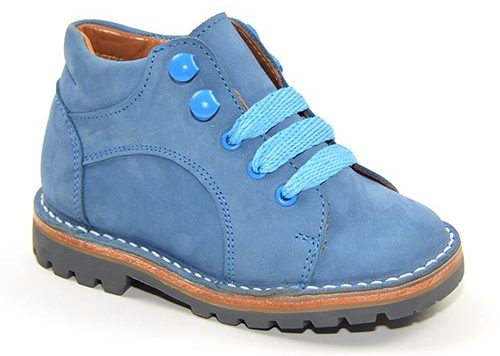Orthopaedic Paediatric Footwear
Why are you being provided with footwear?
If you are being provided with footwear by the orthotics department, it is because the orthotist has seen that there is a need to supply you with something more tailored to you than footwear you would buy in a shop.
The reasons may be that your feet do not fit into stock sized footwear or a medical condition that requires additional protection for the feet (such as diabetes).

How is this assessed?
If orthopaedic footwear is necessary, then the orthotist will look at how your feet function, take measurements, and possibly moulds of your feet. You will be able to discuss what will work best for you, styles, colours, and the fastening type (either lace or Velcro). All this information is then sent to a factory where your footwear is then made for you.
How the footwear is fitted
Around six weeks after you are first seen, you will have an appointment to see how they fit. At first the footwear may only be made to a fitting stage; this means it will not have a sole and will not fully reflect the finished design. An orthotist will check how the footwear is fitting to your feet, checking for the sizing and fastenings, as well as asking if you feel comfortable wearing them.
If any alterations need to be made the orthotist will note these down, even if they are nicely fitting and appropriate, they will still need to be sent back to the factory to be finished.
Sometimes, just to be sure, the orthotist may have a second fitting appointment with you, where the shoe is adapted but not yet finished. This will confirm that the adaptions needed have been successful, and that when finished the footwear will be a good fit.
When footwear is provided
When both you and the orthotist are happy with the footwear, a final fitting appointment will be made. The shoes will be finished with a sole and any necessary adaptions, the orthotist will check the fitting again and you will be able to walk in them to make sure you are happy too.
We advise that all footwear is gradually worn in, for the first day we advise only to wear them for 30 minutes. This can be increased by half an hour every day (day 2 you can wear for 1 hour, day 3 for 1 hour 30 minutes, etc.) until you are wearing them all the time when you would be wearing shoes normally.
As you break them in, you must check your skin condition. You should look for blisters, swelling, warmth, cuts, or persistent pressure marks. At first, it’s possible you may get some red pressure marks that appear on your feet, as long as these go away within 20 minutes of removing the shoe then this is not unusual. If these red marks persist longer than 20 minutes consistently, or any of the above concerns are present, please stop wearing the footwear and contact the Orthotics Department.
Before putting on footwear, it is important that you check the insides to make sure there are no loose objects or material that could rub your foot such as stones, sand, or grit. It is also important that you undo the fastening, do not try to use them as slip on shoes. Undoing the laces helps to both keep the footwear in a good condition for a longer time, as well as keeping your foot secure and fastened inside the shoe to stop movement and rubbing.
Reviews, repairs and replacements
You are entitled to one pair of shoes.
It is important you keep the heels and soles repaired. The hospital will repair them free of charge. Please drop in your footwear at main reception located in North Wing, labelled with your name hospital number and enclose a note stating which repairs you wish to have carried out. The footwear will be replaced when they are deemed irreparable by the Orthotic Department or if your shoe size has changed.
Contact numbers
We hope that you have found this information useful. If you have any questions or are worried about anything, please speak to the Orthotic Department at Dorset County Hospital on 01305 254408.
About this leaflet
Authors: Matt Pearson, Orthotist
Written: February 2025
Approved: July 2025
Review date: July 2028
Edition: v1
If you have feedback regarding the accuracy of the information contained in this leaflet, or if you would like a list of references used to develop this leaflet, please email patientinformation.leaflets@dchft.nhs.uk
Print leaflet